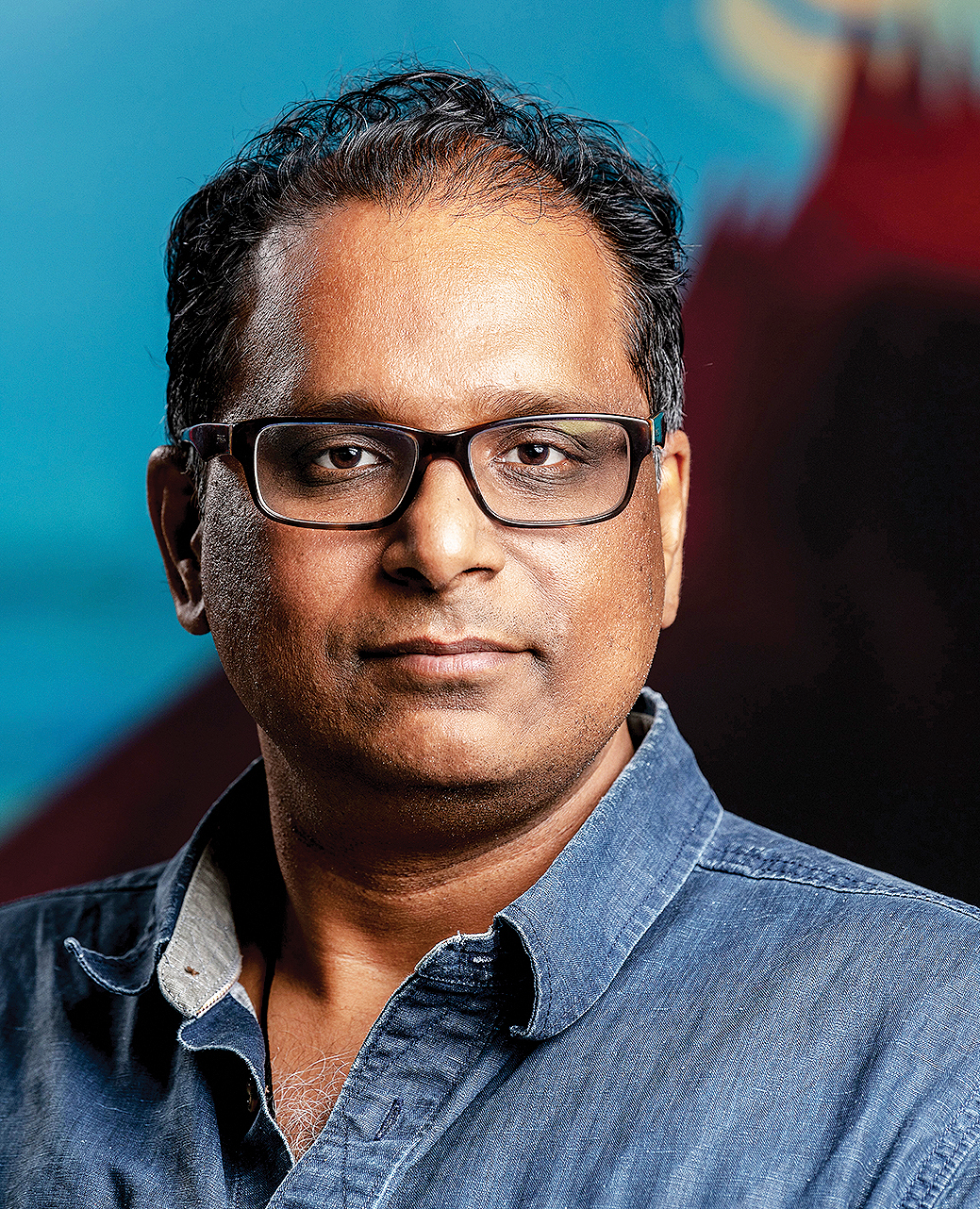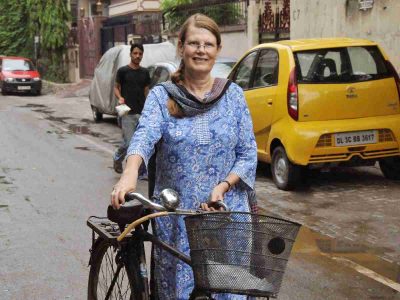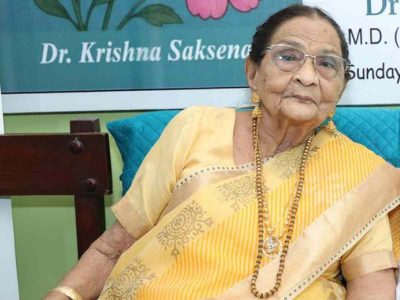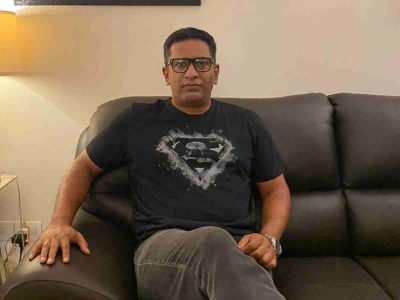‘Priya and the Lost Girls’ – an augmented reality comic book created by Ram Devineni – tells the story of a female superhero’s fight against sex trafficking
A modern-day superhero, Priya is like no other. A rape survivor, she was introduced to the world, in the comic book ‘Priya’s Shakti’, launched in 2014. Defying regressive patriarchal norms since then, she is now back in the third volume ‘Priya and the Lost Girls’, where she’s taking on sex trafficking.
In this latest edition, Priya discovers that all the young women in her rural village including her sister, Laxmi have been taken to an underground brothel city called Rahu. The city is ruled by a demon who gets his power through fear and entrapment of women.
The augmented reality comic book has been released as part of the “16 Days of Activism Against Gender-Based Violence,” an international campaign to challenge violence against women and girls. Patriot catches up with creator Ram Devineni, who has researched the story in Sonagachi in Kolkata – the largest red light district in Asia.
Unlike most other comic superhero characters, Priya in the series goes beyond the general good vs evil narrative. Could you please elucidate on this?
This comic book “Priya and the Lost Girls” was the most difficult to write because everything was not black and white. There was a lot of complexity to the issues. I felt many of the women in Sonagachi were sacrificing their bodies and lives to support their families and children. “Sacrifice” was a major theme that I noticed. And this is where the idea of the volcano and Rahu came into the comic book. Often in mythology and ancient cultures, women were thrown into the volcano to appease the gods. The women willingly sacrificed their lives for their community. This lead to the idea of Rahu who is portrayed as a demon who gets his energy from the volcano and the women who serve him. He is “the brothels” and what they represent — psychological control. So, Priya needed to break this control and let the women decide for themselves. In all of our comic books, the women make the final decision.
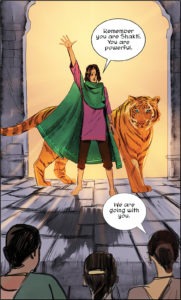
What propelled the idea of Priya taking on sex trafficking in the third edition of the series?
Our NGO partner, Apne Aap Women Worldwide wanted to focus on this topic in the third edition because that is their core mission – to help women escape from brothels and from being trafficked. I also wanted to focus on the relationship between Priya and her sister, Lakshmi. Women who are trafficked to Sonagachi or other places are often going there to support their family. There is an “uncomfortable” complicity that occurs within families when one of their daughters is forced into prostitution to support the rest of the family. Additionally, sex trafficking and human trafficking is a massive global problem — only second to that of drugs, and even worse than weapon trafficking. So, this topic needed to be addressed, and stories of women who are survivors needed to be told in the third edition.
It has been described as a ‘definitive comic book of the #MeToo movement’. Could you please share with us how this was incorporated in the story?
When we wrote the first comic book, “Priya’s Shakti”, everything was different. There were large shifts in society towards women’s rights and the first woman president of the USA was about to be elected. Now it seems the complete opposite. Even though the #MeToo movement challenged many patriarchal views and acts that were ignored for a while, I felt the movement was out of anger as opposed to hope. And that is a reflection of the times and shifting political situation around the world. So, in the end of the comic book, “Priya and the Lost Girls,” – Priya takes all the women in the village and they vanish into the wilderness. Priya says I will be waiting and watching. She is challenging us. What will we do next?
Can you tell us a bit about the research on your part that went behind the creation of ‘Priya and the Lost Girls’?
I went to Songachi in Kolkata, back in January 2017. There I met a dozen women who told me their stories. Many of them were coerced or tricked either by family members like distant aunts or uncles or were promised domestic work. When they arrived in Kolkata, they became trapped either through physical force or they had no means of returning and saw prostitution as the only option. Some of them knew about the place and consciously chose to work and stay. What was consistent with all of the women was that they were all supporting families in other parts of India and this became their only option. In most cases their family members knew and accepted this “uncomfortable symbiosis” because they had very little money or support. Ironically, the families would not accept their own daughters back because of the shame, but they are willing to take her money.
What has been you biggest takeaway from this project?
Many of the women had children living with them in very cramped and dingy rooms in Sonagachi. Often a room was shared by multiple women with their children. And the room was also where they saw their clients. You can only imagine the psychological effect this had on their children. What I found surprising is that many of the women chose to stay. Maybe in the beginning they were beaten and mentally coerced into this life. But, I did not see any women shackled to a bed post or imprisoned. At least, not physically shackled. I am not implying the women liked the lifestyle. All of the women I spoke with wanted to leave, but they cannot. Songachi became a psychological and social prison for them. This became the theme of Rahu in the comic book.
How impactful was it to use augmented reality to engage with young people?
The comic book is the perfect format for augmented reality (AR) because the entire book is images and are perfect markers to tell stories. Embedded in the AR are many new layers including stories from survivors who were sex trafficked, and short documentaries. For “Priya and the Lost Girls,” we used some innovative use of green-screen filming to put real people and effects into the comic book. On a technological level, we believe the use of AR will have a significant impact on readers in India who are not as familiar with this approach. There is a huge “WOW” factor when readers first experience augmented reality.
What is the next in the series?
We will begin researching the next chapter because it takes two years to work on each comic book. The topic will be honour killings and female infanticide.

